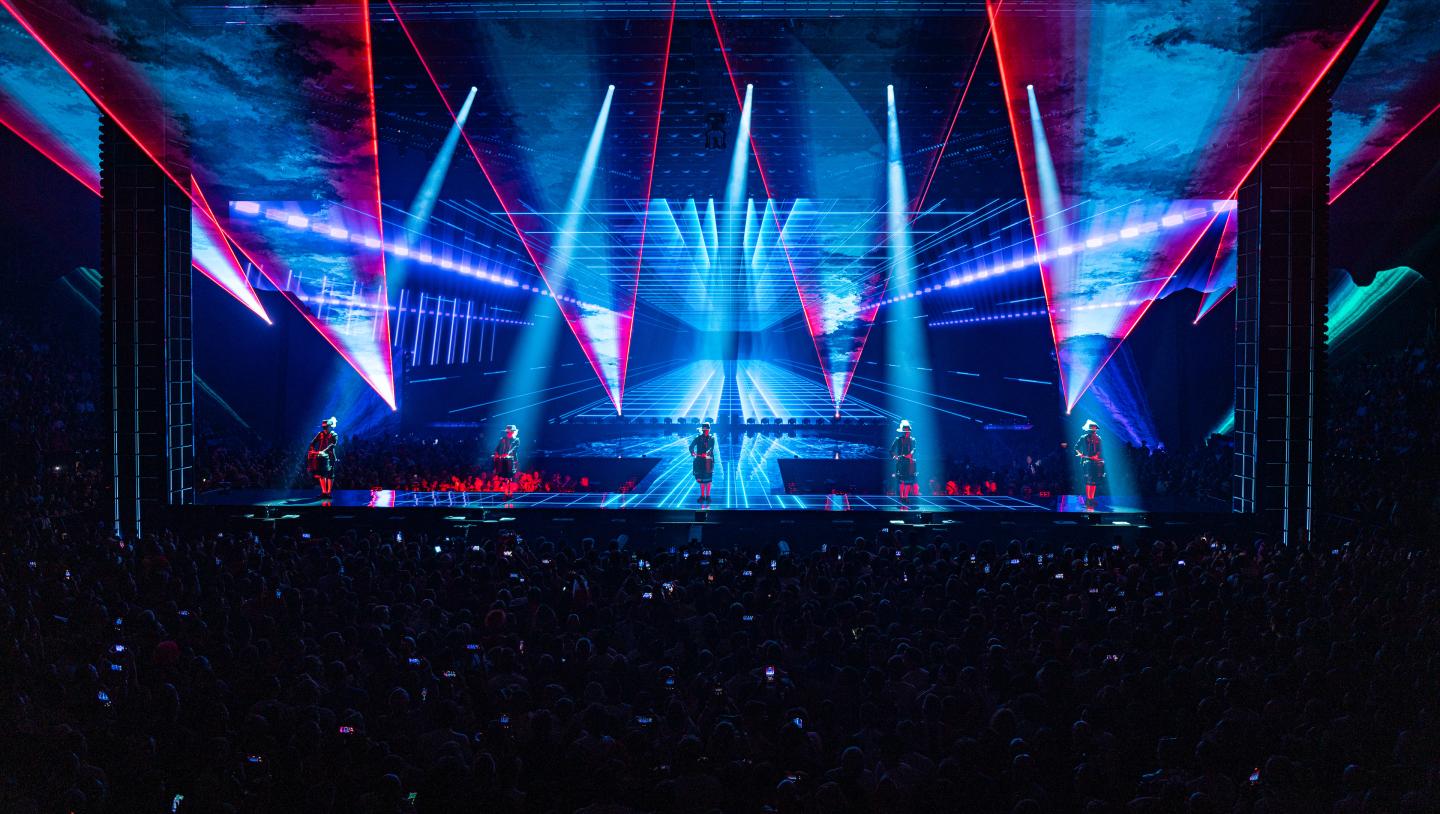Six reasons to use ST 2110 for your next live event, broadcast, or immersive experience
Live Events
Music
Workflows

ST 2110 - a suite of standards developed by SMPTE (the Society of Motion Picture and Television Engineers) for the transmission of video over IP networks - promises to reshape the future of the production industry.
ST 2110 brings a number of key benefits to live events, broadcasts, immersive experiences and more. Already deployed in major Disguise-powered productions such as Eurovision 2025 and Eurovision 2024, ST 2110 is proving essential for delivering low-latency, high-quality IP video at scale. Our integration with this groundbreaking standard is only deepening - and with it, the creative possibilities for production teams everywhere.
The recent release of Designer r30.8 allows users to directly intake ST 2110 streams to their Designer instance and output them from a Disguise server’s IP-VFC. We will be extending its functionality later this year and we can’t wait to go into more detail as new features are released.
For now - let’s explore the six key reasons why video teams should be using ST 2110 to bring their next live show, production or experience to life:
- Efficient media transmission over IP
ST 2110 enables video data to be transferred with lower latency and less compression compared to NDI connections. For distributed setups using Disguise RenderStream in particular, this results in faster, more efficient workflows and sharper real-time graphics.
- Accurate timing and synchronisation with PTP
ST 2110 leverages Precision Time Protocol (PTP) to ensure all devices on the network are synchronised to the same clock. This level of precision enables frame-accurate alignment across systems - allowing users to align their video and networking infrastructure, as well as take advantage of any existing PTP setups they may have.
- Leverage networking best practices for redundancy strategies
As part of the ST 2110 standard, SMPTE 2022-7 sends a second, identical copy of a video stream to cover in the event of outgoing signal flow failure. This allows for dual signal paths to be sent, with the key advantage being uninterrupted video delivery - crucial in mission-critical, high-pressure production environments.

Eurovision 2025. Photo credits: Ralph Larmann
- Improved interoperability
NMOS (Networked Media Open Standard) is a group of specifications underpinning ST 2110, allowing for orchestration of media flows on an IP network, and essentially makes ST 2110-based infrastructure more manageable and simpler to operate. NMOS specifications include IS-04 Discovery & Management and IS-05 Connection Management. These allow users to see any other NMOS-enabled devices on the network, improving interoperability between these devices.
- Synergy with other systems
The vast majority of commonly available audio and lighting systems have already transitioned to IP-based networked controls. By bringing video in line with these other key elements of a production, users are able to centralise the control of their setup and ensure they’re consistently using the best tools available for the task at hand. As an open standard, ST 2110 enables smooth integration across the entire production pipeline, allowing teams to work more cohesively and adapt quickly to changing needs.
- Compatibility with COTS technology
ST 2110 uses commercial off-the-shelf technology (COTS) within its infrastructure. This readily available hardware can be purchased without the need for significant customisation - directly contrasting with SDI workflows, which typically rely on bespoke technology for the broadcast and live events markets in particular. Upgrading this technology to implement higher bandwidths over SDI requires major investment, while IP-based ST 2110 can take advantage of the economies of scale of the IT industry, freeing up resources for future innovation.
These six key ST 2110 benefits make the standard a clear choice for forward-thinking teams. Bringing improved efficiency, reliability, and flexibility, its impact spans live events, location-based experiences, broadcast and virtual production - but the benefits don’t end there. Disguise’s ongoing innovation around ST 2110 will continue to build on what’s possible.
Working with our partners at Trinity College Dublin on the Horizon Europe EMERALD Research Initiative, we’re looking to make unique improvements to the format that will take future implementations even further beyond the ST 2110 benefits described above.
Step into the future of production with ST2110 and Disguise - stay tuned for further announcements.